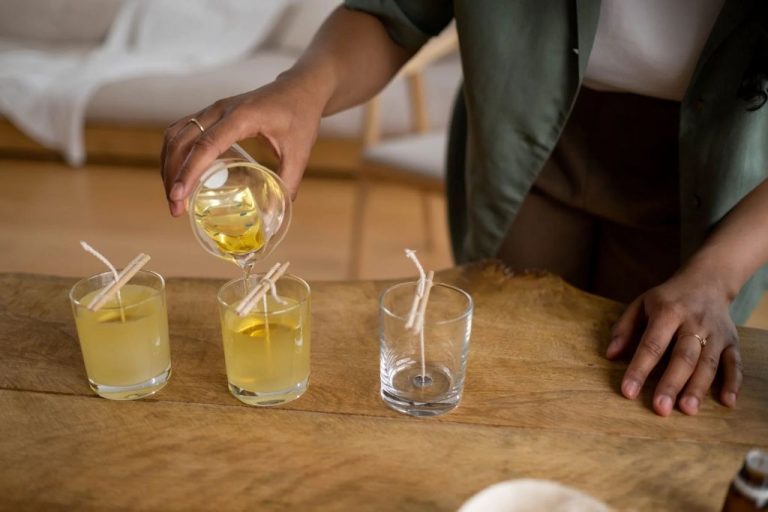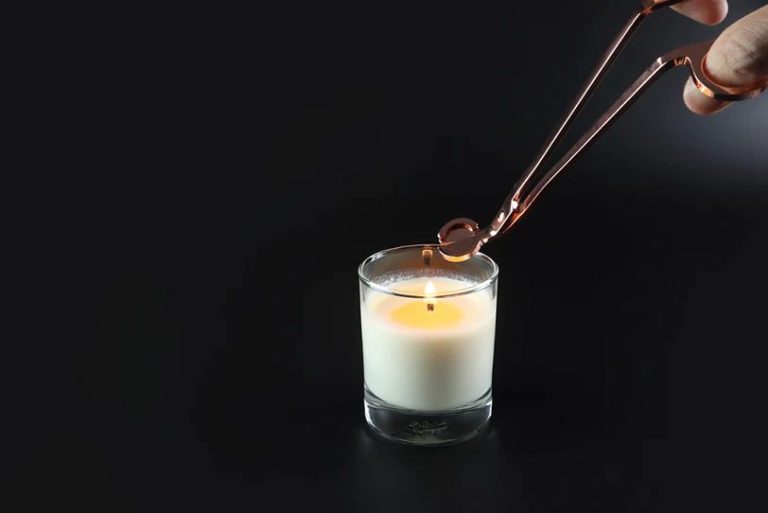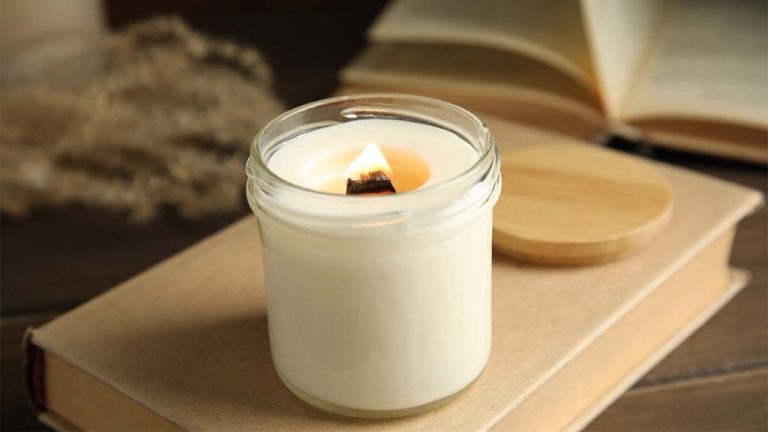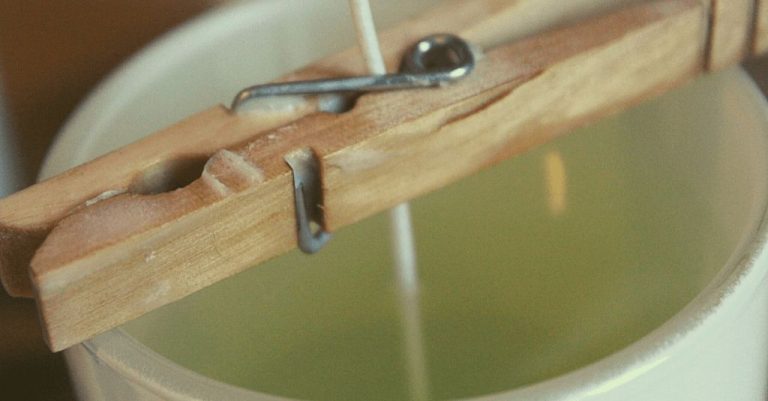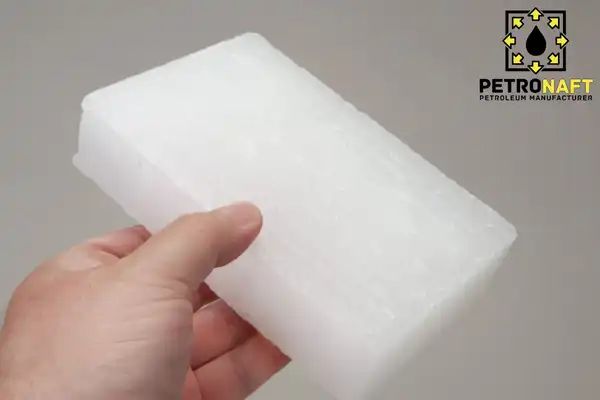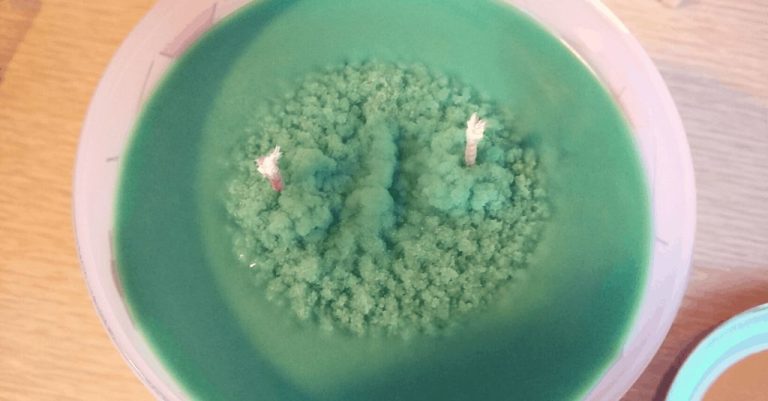How Much Wax To Scent Candlescience?
Candle making is a popular hobby and craft that allows creative expression through scent and design. Properly scenting candles is one of the most important steps in candle making, as fragrance oils are what provide candles with their signature smells. The right fragrance load, or amount of scent, is key to achieving optimal scent throw from a candle.
Scent is an incredibly powerful trigger for memory and emotion in humans. When making candles, choosing fragrance oils that evoke certain moods, memories, or feelings is part of the artistry. Determining the ideal fragrance load allows candle makers to fully showcase particular scents. Under-scented candles result in poor scent throw, while over-scented candles can produce an overwhelming smell and even soot. Finding the right balance is essential.
This guide will explore how much fragrance oil to use when scenting various candle wax types and formulas. Following proper guidelines for fragrance loads will lead to beautifully scented, high quality candles.
Determine the Type of Wax
There are several types of waxes commonly used for candle making:
- Paraffin wax – This is a petroleum-based wax made from refining crude oil. It has a high melting point and makes hard, long-burning candles (source: Paraffin Wax vs. Soy Wax Candles – Homesick.com)
- Soy wax – Made from hydrogenated soybean oil, soy wax is a renewable and biodegradable alternative to paraffin. It has a lower melting point and makes softer candles (source: Paraffin Wax vs. Soy Wax Candles – Homesick.com)
- Beeswax – Created by honey bees, beeswax is a natural wax that burns cleanly. It has a high melting point of 144-149°F (source: Which Temperature Does Candle Wax Melt? Complete list of …)
The type of wax impacts the melting point, hardness, burn time, texture, and scent throw of the finished candle. It’s important to select the appropriate wax for your needs.
Calculate the Weight of Wax
To determine how much wax you need for your candle, you first need to measure the volume of your container. The most accurate way is to fill the container with water and measure the weight of the water in grams. This will give you the volume in milliliters since 1 ml of water weighs 1 gram. For example, if your container holds 255 grams of water, you know the volume is 255 ml.
Once you know the volume, you can calculate the wax weight using the density of the wax. The density of soy wax is around 0.9 g/ml. So for a 255 ml container, you would need around 255 * 0.9 = 230 grams of wax. The density allows you to convert the volume measurement to a weight measurement. The final weight of wax needed will depend on the type of wax used.
Another approach is to first weigh your empty container, then fill it with wax and weigh it again. Subtract the empty container weight from the full weight to determine how much wax was needed to fill the volume. This gives you a direct measurement tailored to your exact container.
It’s recommended to calculate about 10-20% more wax than the measured volume to account for wax that adheres to the sides of the pouring pitcher. This provides a buffer so you don’t run short on wax when making the candles.
Recommended Fragrance Load by Wax Type
The suggested fragrance load varies depending on the type of wax used in candle making. Each wax has a maximum recommended percentage of fragrance oil that it can hold before the scent throw weakens or the candle properties are affected.
For soy wax, the recommended fragrance load is 6-10% 1. Soy wax can typically hold more fragrance oil than paraffin wax. A load between 8-10% is common for soy container candles.
Paraffin wax candles often use a fragrance load of 5-8% 2. Up to 10% may be used for pillars or votives. However, too much fragrance can cause issues like sweating or pooling in paraffin wax.
For palm wax, the recommended fragrance load is 4-6% 1. Palm has excellent scent throw so lower loads are often effective.
Beeswax and vegetable waxes typically use 1-3% fragrance loads 2. Their porous structure absorbs scents easily so heavy loads can overwhelm.
It’s best to stay within the recommend range for each wax type. Testing different percentages can help find the optimal fragrance load.
Measuring the Fragrance Oil
To accurately measure fragrance oil, the best tool to use is a digital scale. A scale allows you to weigh the exact amount needed based on the percentage of fragrance load you want to use. Most experts recommend using 0.5-1 ounce of fragrance oil per pound of wax as a starting point (1).
If you don’t have a scale, you can also measure fragrance oil using liquid measuring cups or graduated cylinders. Be sure to use cups designed for liquids rather than dry ingredients to get the most accurate measurements. When measuring by volume, take into account that 1 fluid ounce of fragrance oil weighs about 0.95 ounces. So for a 10% fragrance load in 1 pound of wax, you would need approximately 1.6 fluid ounces of fragrance oil (2).
Measuring precisely by weight or volume is important to achieve the desired scent throw and consistency in your candles. Too much or too little fragrance oil can negatively impact performance.
Adding the Fragrance
Properly incorporating fragrance oil into candle wax is key for achieving an even scent throw. Here are some techniques for evenly mixing in fragrance:
Stir the wax and fragrance together for at least 2-3 minutes. Use a whisk or spoon to vigorously blend the oil into the melted wax. The goal is to thoroughly incorporate the fragrance so there are no pockets of oil.
Pour the scented wax into containers in a slow, steady stream. This helps prevent separation of the wax and fragrance. Consider using a pouring pot with a spout to better control the pour.
Allow the candles to cure for 1-2 weeks before burning. During the curing process, the fragrance oil molecules fully bind with the wax (https://www.ecocandleproject.com/blogs/our-blog-posts/wax-don-t-bind-with-fragrance-so-what-really-happens-in-the-candles).
Stir the wax occasionally as it cools. This helps prevent fragrance oil from rising to the surface.
Avoid adding fragrance above 185°F, as heat can degrade the scent. Add fragrance at around 160-170°F for optimal results.
When working in large batches, split the wax into multiple pouring pots after adding fragrance. This ensures thorough blending.
Testing the Scent Throw
Testing the scent throw is an important step in candle making to ensure the fragrance oil is dispersing properly when the candle is burned. There are a few methods candle makers use to test scent strength:
The burn test involves burning the finished candle in a closed room like a bathroom or closet for 30-60 minutes, then leaving the room and coming back after 5-10 minutes to rate the scent strength. This tests the hot throw or scent strength when the candle is actively burning. The ideal hot throw allows you to smell the scent while in the room, but doesn’t overpower.1
The cold throw test involves blowing out the candle and leaving it to sit unlit for 30-60 minutes, then coming back to rate the scent strength. This tests how well the cold candle still emits fragrance. A good cold throw means you can still smell the candle when it’s unlit.2
Testing both hot and cold throw allows candle makers to ensure a pleasing scent experience whether the candle is lit or unlit. Keeping detailed notes on scent performance with different wax, wick, and fragrance oil combinations helps dial in the perfect candle recipe.
Adjusting the Fragrance Load
If the initial recommended fragrance load results in a candle that is too strong or too weak, you may need to adjust the amount up or down. Here are some tips for adjusting the fragrance load:
– To increase scent strength, incrementally increase the fragrance load by 0.5-1%. For example, if you started with a 6% load, try 6.5-7% instead. Be careful not to exceed the recommended maximum fragrance load.
– To decrease scent strength, incrementally decrease the fragrance load by 0.5-1%. For example, if you started with a 6% load, try 5-5.5% instead.
– Allow your candle to cure for 1-2 weeks before evaluating scent strength again. The fragrance becomes stronger as the candle cures.
– Test multiple wicks to find the ideal one for releasing the fragrance. A larger wick creates a stronger scent throw.
– The type of wax can impact scent throw as well. Soy wax tends to have a lower scent throw than paraffin or blends.
– Record your fragrance load percentages and wick types to find the right balance for each particular scent and wax type. Adjusting the load and testing is often needed to optimize the scent throw.
Safety Precautions
When working with wax and fragrance oils to make candles, it’s important to follow safe practices to avoid injuries or accidents.
Always wear protective equipment like safety goggles, heat resistant gloves, and an apron when pouring hot wax or handling fragrance oils (Candle Making Safety Tips Everyone Should Follow). Make sure to work in a well-ventilated area since some individuals may be sensitive to the fumes from fragrance oils.
Only use candle making equipment designed for high temperatures, such as a double boiler, thermometer, and pouring pot. Avoid pouring wax directly into containers since it can splash and cause burns (Candle Making Safety Tips). Allow plenty of time for wax to cool fully before handling.
Keep candle making restricted to older children and don’t allow younger kids in the work area. Supervise teens closely and teach them proper safety precautions. Store all candle making supplies securely out of reach of children (5 Candle Making Safety Tips Everyone Should Follow).
Always follow usage instructions for wax, fragrance oils, dyes, wicks, and any other candle making materials. Use extreme caution with any fuels or ignitable products.
Summary
In summary, the key steps and tips for scenting candles are:
- Determine the type of wax and the weight to calculate the amount of fragrance oil needed.
- Follow the recommended fragrance load guidelines based on wax type, usually 6-10%.
- Precisely measure the fragrance oil before adding it to the melted wax.
- Mix the fragrance oil thoroughly to distribute it evenly in the wax.
- Test the scent throw by letting a small sample cure before adjusting as needed.
- Increase the fragrance load gradually in subsequent tests if scent is too light.
- Take safety precautions by wearing gloves and working in a well-ventilated area.
Properly scenting candles requires knowing the wax type, measuring carefully, and testing the results. With some trial and error, you can achieve the desired scent throw.

